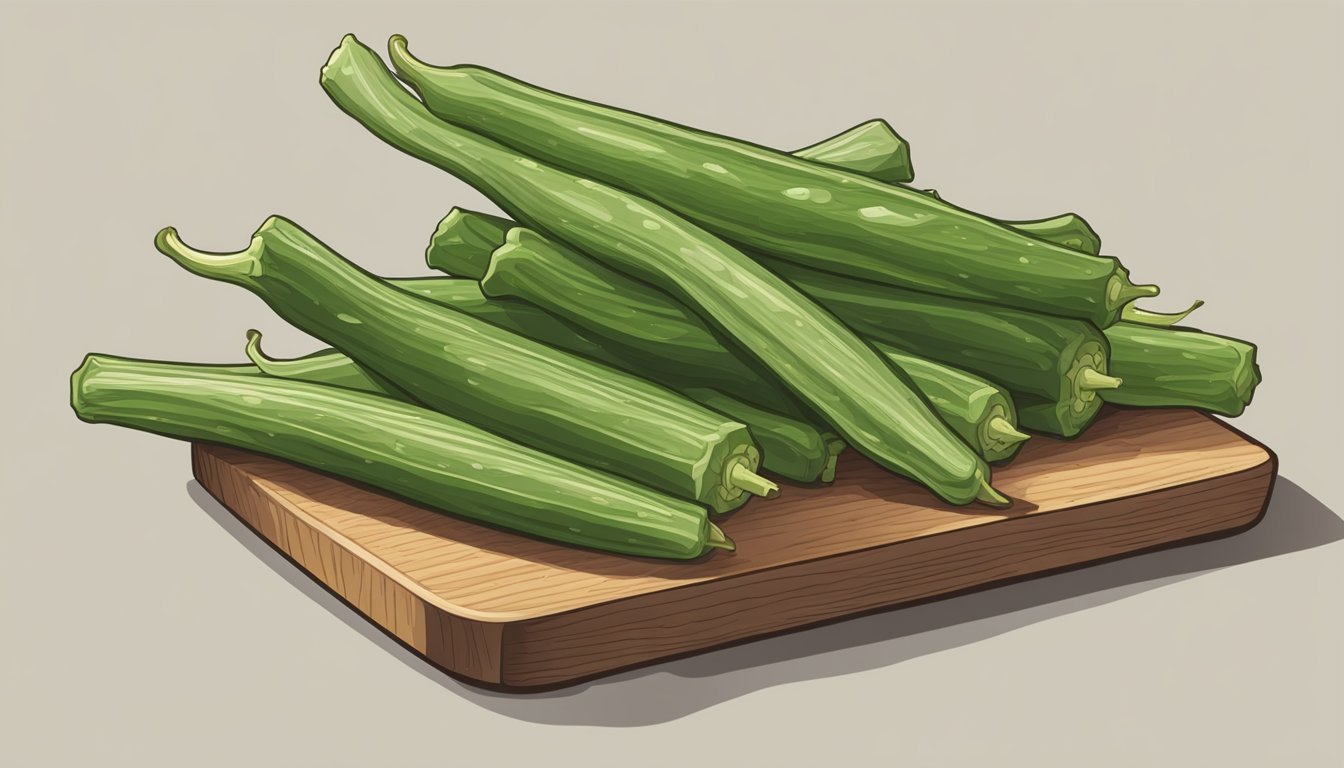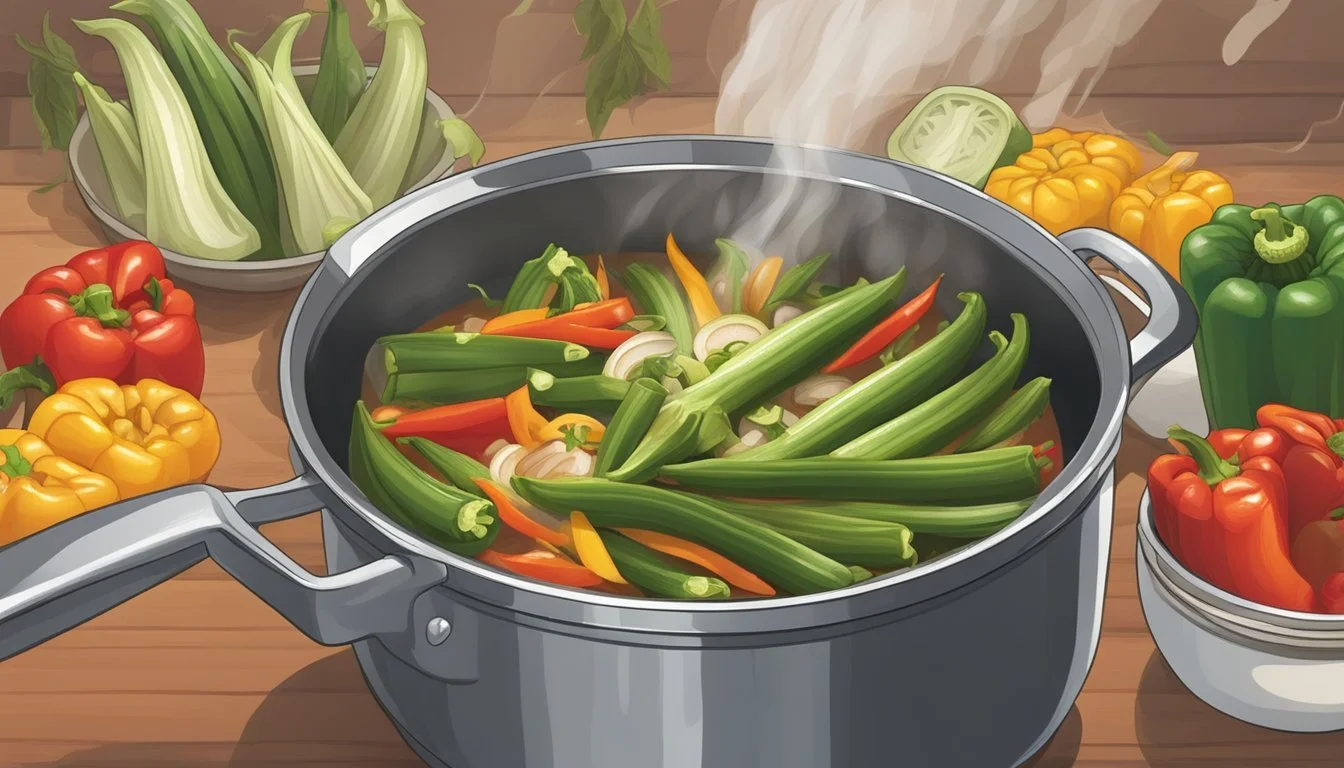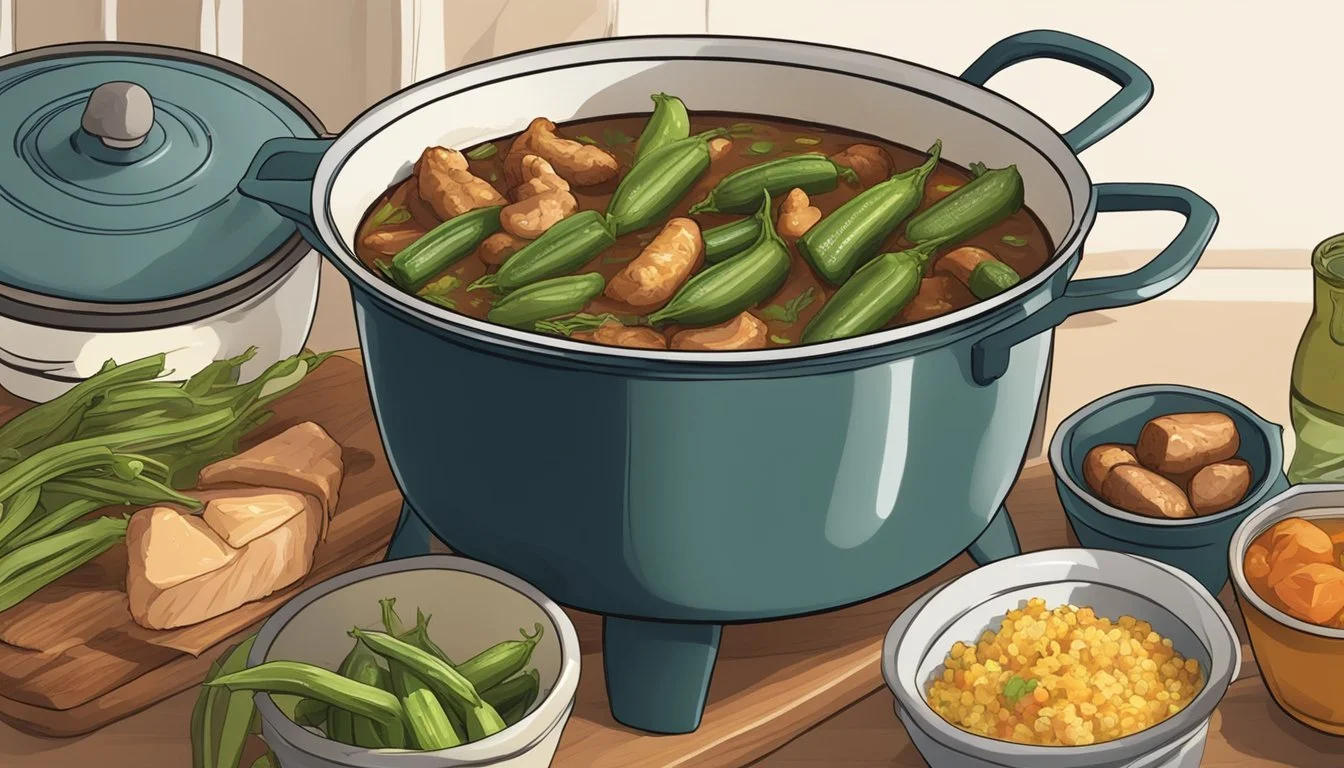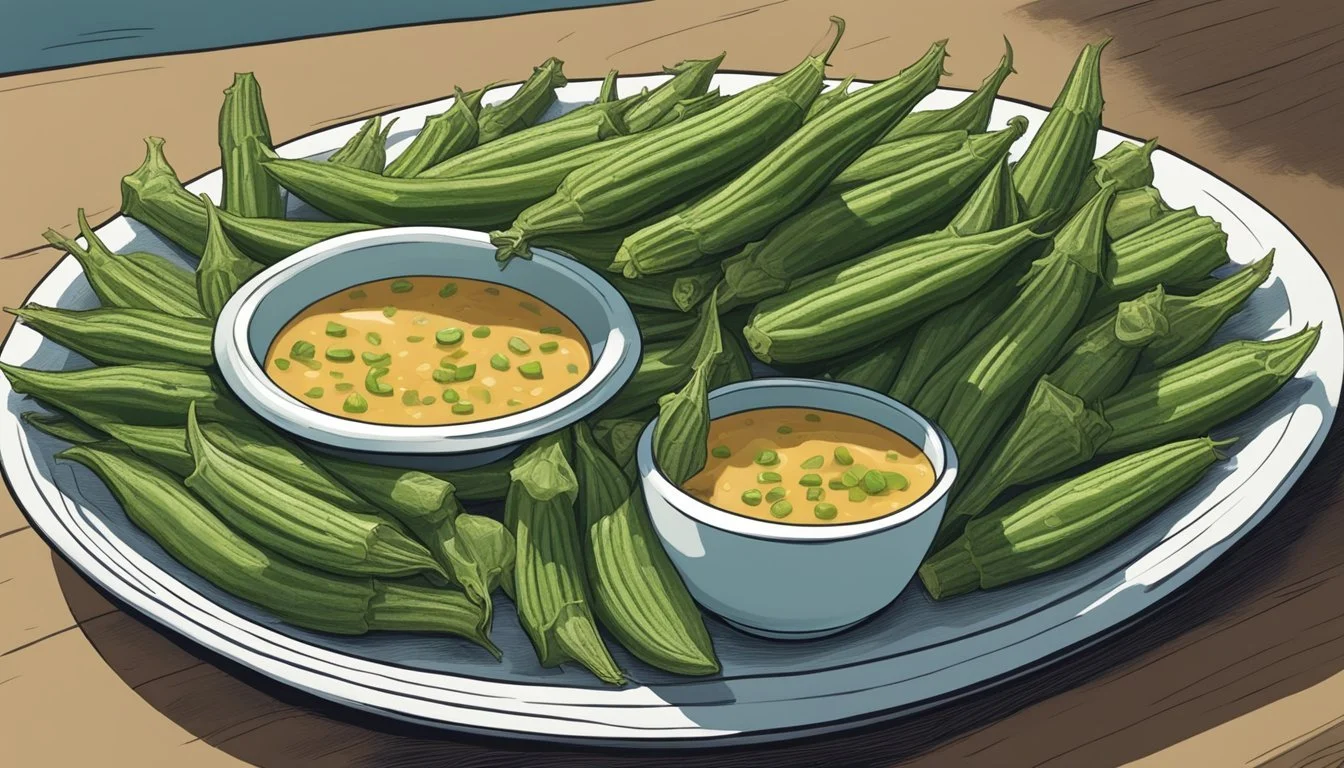Frozen vs Fresh Okra for Gumbo: Which Makes the Better Stew?
Gumbo, a beloved staple of Cajun and Creole cuisine, often features okra as a key ingredient. This slimy yet flavorful vegetable adds thickness and a distinct taste to the rich stew. When preparing gumbo, cooks face a common dilemma: whether to use fresh or frozen okra.
Both fresh and frozen okra can be used successfully in gumbo, with each option offering its own advantages. Fresh okra provides a crisp texture and vibrant color, while frozen okra offers convenience and year-round availability. The choice largely depends on personal preference, seasonality, and the specific recipe being followed.
Regardless of the form chosen, okra contributes valuable nutrients to gumbo. It's a good source of fiber, vitamins, and antioxidants, making it a healthy addition to this hearty dish. When cooking with okra, proper preparation techniques help minimize its slimy texture and maximize its flavor contribution to the gumbo.
Historical Context
Gumbo traces its roots to 18th century Louisiana, blending culinary traditions from West Africa, Native Americans, and European settlers. The dish exemplifies the cultural melting pot of New Orleans and surrounding regions.
Okra, a key ingredient in many gumbo recipes, arrived in North America through the transatlantic slave trade. West African cooks incorporated this familiar vegetable into their New World cuisine.
In early 19th century New Orleans, both Creole and African American communities embraced gumbo. The dish reflected the diverse influences shaping Louisiana's food culture.
Okra gumbo became particularly popular in the lowcountry regions of the American South. Its thickening properties made it a practical and flavorful addition to the stew.
By the 20th century, gumbo had evolved into numerous regional variations. Some recipes favored okra, while others used filé powder as a thickener. This diversity showcased gumbo's adaptability across different communities.
Today, both fresh and frozen okra are used in gumbo preparations. The choice often depends on seasonal availability and personal preference. Regardless of form, okra continues to play a vital role in preserving the historical and cultural significance of this iconic Louisiana dish.
Choosing Okra for Gumbo
Selecting the right okra is crucial for creating a delicious gumbo. The choice between fresh and frozen okra can significantly impact the dish's texture, flavor, and nutritional content.
Comparing Fresh and Frozen Okra
Fresh okra offers a crisp texture and vibrant flavor when cooked properly. Look for bright green pods that are firm and free from blemishes. Smaller pods (2-4 inches) tend to be more tender and less fibrous.
Frozen okra provides convenience and year-round availability. It's often pre-sliced, saving preparation time. Frozen okra can be a good option when fresh is out of season or unavailable.
Quality frozen okra retains much of its nutritional value and flavor. However, it may become softer when thawed, potentially affecting the gumbo's texture.
Nutritional Content of Okra
Okra is a nutrient-dense vegetable, offering several health benefits. A 100-gram serving of okra contains:
Calories: 33
Fiber: 3.2 grams
Vitamin C: 23% of the Daily Value (DV)
Potassium: 6% DV
Iron: 4% DV
Calcium: 8% DV
Okra is particularly high in fiber, which aids digestion and promotes feelings of fullness. Its vitamin C content supports immune function and collagen production.
Impact on Gumbo Texture and Flavor
Fresh okra can contribute a distinctive texture to gumbo, with its seeds providing a slight crunch. It also releases a natural thickening agent when cooked, helping to give gumbo its characteristic consistency.
Frozen okra may not thicken the gumbo as effectively as fresh, but it still adds flavor and nutrients. To compensate, some cooks add a small amount of file powder or additional roux.
The cooking method affects okra's texture in gumbo. Sautéing okra before adding it to the gumbo can reduce its slimy texture and enhance its flavor.
Fundamentals of Gumbo Cooking
Gumbo's rich flavor and hearty texture come from key cooking techniques and ingredients. Mastering these elements creates an authentic Cajun experience.
Preparing a Traditional Roux
A traditional roux forms the foundation of gumbo. To make it, cook equal parts flour and vegetable oil over medium heat, stirring constantly. The process takes 20-30 minutes, resulting in a dark brown color and nutty aroma.
A properly cooked roux adds depth and acts as a thickener. The darker the roux, the richer the flavor but less thickening power. Aim for a chocolate brown color for optimal taste and consistency.
Be patient and attentive while preparing roux. It can burn easily, ruining the dish. Keep the heat moderate and stir continuously for best results.
Role of the Holy Trinity
The "Holy Trinity" in Cajun cooking consists of onions, green bell peppers, and celery. This vegetable blend provides aromatic flavors and textures essential to gumbo.
Dice the vegetables finely and sauté them in the roux until softened. The ratio is typically:
2 parts onion
1 part green bell pepper
1 part celery
This combination creates a balanced base flavor. Adjust quantities to personal preference, but maintain the proportions for authentic taste.
Building Layers of Flavor
Gumbo's complex flavor profile comes from layering ingredients. After the roux and trinity, add garlic, bay leaves, thyme, and cayenne for depth.
Incorporate stock or broth next. Chicken or seafood stock works well, depending on the gumbo variety. Simmer to meld flavors.
Add main proteins like chicken, sausage, or seafood. Cook until done, then introduce okra or filé powder as a thickener.
Season with salt, pepper, and additional spices to taste. Let the gumbo simmer, allowing flavors to develop fully. The longer it cooks, the richer it becomes.
Incorporating Proteins
Proteins play a crucial role in creating a hearty, flavorful gumbo. The choice of meats and seafood can significantly impact the dish's taste and texture.
Selecting Suitable Meats
Andouille sausage is a classic choice for gumbo, offering a smoky flavor and firm texture. Sliced into rounds, it holds up well during long cooking times. Chicken thighs are another popular option, providing tender meat that absorbs the rich flavors of the broth. For a unique twist, consider using beef short ribs. Their marbling adds depth to the gumbo as it cooks.
Bacon can be used to start the dish, rendering its fat to sauté vegetables. This adds a savory note to the base. Some recipes incorporate ham hocks for extra richness. When using poultry or pork, brown the meat before adding it to the gumbo to enhance flavor and texture.
Seafood Variations
Shrimp is a staple in many seafood gumbos. Add them towards the end of cooking to prevent overcooking. Large, peeled and deveined shrimp work best. Crabmeat, either lump or claw, adds delicate sweetness to the dish. Incorporate it gently to maintain its integrity.
For a true seafood gumbo, consider adding oysters or crawfish tails. These ingredients require careful timing to avoid becoming tough. Firm white fish like catfish or red snapper can also be included, cut into chunks and added in the final stages of cooking.
In Creole gumbo variations, a combination of seafood and meat is common. This might include shrimp, crab, and andouille sausage in the same pot, creating a complex flavor profile.
Additional Ingredients and Variations
Gumbo offers endless possibilities for customization through ingredient additions and seasoning adjustments. The choice of fats can also significantly impact the flavor profile.
Vegetable Additions
Tomatoes are a popular addition to gumbo, providing acidity and sweetness. Canned diced tomatoes work well, adding depth to the broth. Garlic cloves, minced or crushed, infuse the dish with aromatic notes. Yellow onions and green onions contribute layers of flavor, with the former offering savory depth and the latter a fresh, mild bite.
Parsley adds a fresh herbal note when sprinkled on top before serving. Carrots bring sweetness and color, while mushrooms contribute an earthy element. Bell peppers, particularly green ones, are a staple in many gumbo recipes, adding a distinctive flavor and crunch.
Seasoning for Depth
Creole seasoning blends provide a complex flavor profile in one convenient mix. Cajun cooking often relies on a holy trinity of onions, celery, and bell peppers as a base. Kosher salt enhances all flavors without adding iodine taste.
Cayenne pepper brings heat, while black pepper adds a mild spiciness. Paprika contributes a sweet, peppery flavor and vibrant color. These spices can be adjusted to taste, allowing cooks to control the heat level and overall flavor intensity of their gumbo.
Fats and Their Influence
Bacon fat imparts a smoky richness to gumbo, enhancing the overall flavor profile. It's often used to sauté vegetables at the start of cooking. Butter adds a creamy richness and helps to create a silky texture in the broth.
Canola oil is a neutral-flavored option for those seeking a lighter taste. It's suitable for cooking the roux without overpowering other flavors. The choice of fat can significantly impact the final taste and mouthfeel of the gumbo, allowing for personalization based on dietary preferences or desired flavor outcomes.
Serving and Presentation Suggestions
Gumbo presentation enhances the dining experience. Proper garnishing and pairing choices complement the rich flavors of this classic dish.
Garnishing and Serving Techniques
Serve gumbo in deep bowls to showcase its hearty nature. Ladle the hot gumbo over a mound of cooked rice placed in the center of each bowl. This arrangement allows diners to mix the rice as desired.
Garnish with finely chopped green onions for a fresh, crisp contrast. Sprinkle chopped parsley on top to add color and a subtle herb flavor. For those who enjoy extra heat, offer hot sauce on the side.
File powder can be passed separately at the table. This allows guests to adjust the thickness and flavor of their gumbo to personal preference.
Pairing with Rice or Alternatives
Long-grain white rice is the traditional accompaniment for gumbo. Its neutral flavor and fluffy texture complement the rich, complex flavors of the stew.
For a healthier option, serve gumbo with brown rice. Its nutty taste and chewy texture add an interesting dimension to the dish.
Cauliflower rice offers a low-carb alternative. Its mild flavor won't overpower the gumbo, while providing a similar visual appeal to traditional rice.
Consider serving gumbo with crusty French bread on the side. The bread is perfect for soaking up the flavorful broth.
Understanding Nutritional Information
Fresh and frozen okra offer similar nutritional profiles, with some minor differences. Both provide essential nutrients that contribute to a healthy diet.
Calories in okra are relatively low, making it a good choice for weight management. A 100-gram serving contains approximately 33 calories.
Fiber content is noteworthy in okra. This vegetable provides about 3.2 grams of fiber per 100-gram serving, supporting digestive health and promoting feelings of fullness.
Sodium levels are naturally low in both fresh and frozen okra. This makes it suitable for those monitoring their salt intake.
Okra is virtually free of saturated fat and cholesterol, aligning with heart-healthy dietary recommendations.
Key vitamins and minerals in okra include:
Vitamin C
Vitamin K
Folate
Magnesium
Potassium
Fresh okra may retain slightly higher levels of vitamin C compared to its frozen counterpart. However, frozen okra can still be a nutritious option, especially when fresh is not available.
Both forms of okra contribute antioxidants to the diet. These compounds help protect cells from oxidative stress.
When using okra in gumbo, the nutritional impact remains largely unchanged. The cooking process may cause minimal nutrient loss, but the overall nutritional value remains beneficial.
Cookware and Utensils
Proper tools and equipment are essential for creating authentic gumbo. The right cooking vessel and utensils can make a significant difference in the final dish.
Choosing the Right Cooking Vessel
A heavy-bottomed Dutch oven is the ideal pot for making gumbo. Its thick walls and bottom distribute heat evenly, preventing hot spots and scorching. Cast iron Dutch ovens are particularly well-suited for this task.
For smaller batches, a large skillet can work in a pinch. However, it may not provide the depth needed for a proper gumbo.
A stockpot is another option, especially for larger quantities. Choose one with a thick bottom to ensure even heating.
Essential Tools for Preparation and Cooking
A wooden spoon is crucial for stirring gumbo, especially when making the roux. It won't scratch the pot and can withstand high temperatures.
A long-handled ladle helps safely serve hot gumbo. Look for one with a deep bowl to capture all the ingredients.
A sharp knife is necessary for chopping vegetables and meats. A cutting board provides a stable surface for prep work.
For authentic Cajun cooking, consider adding filé powder made from ground sassafras leaves. Use a small spoon or measuring spoon for precise portioning.
A strainer can be useful for rinsing okra before adding it to the gumbo.










